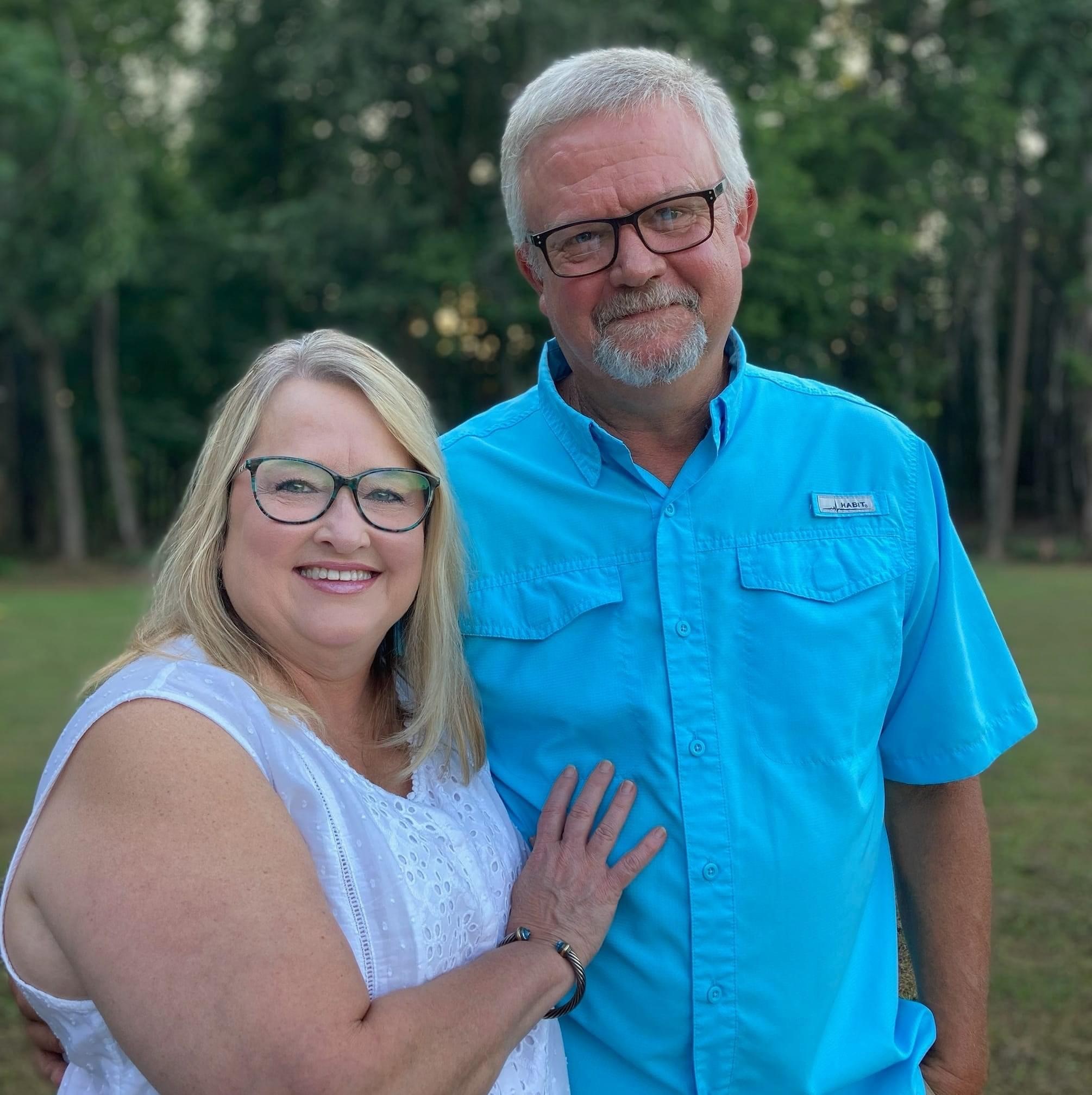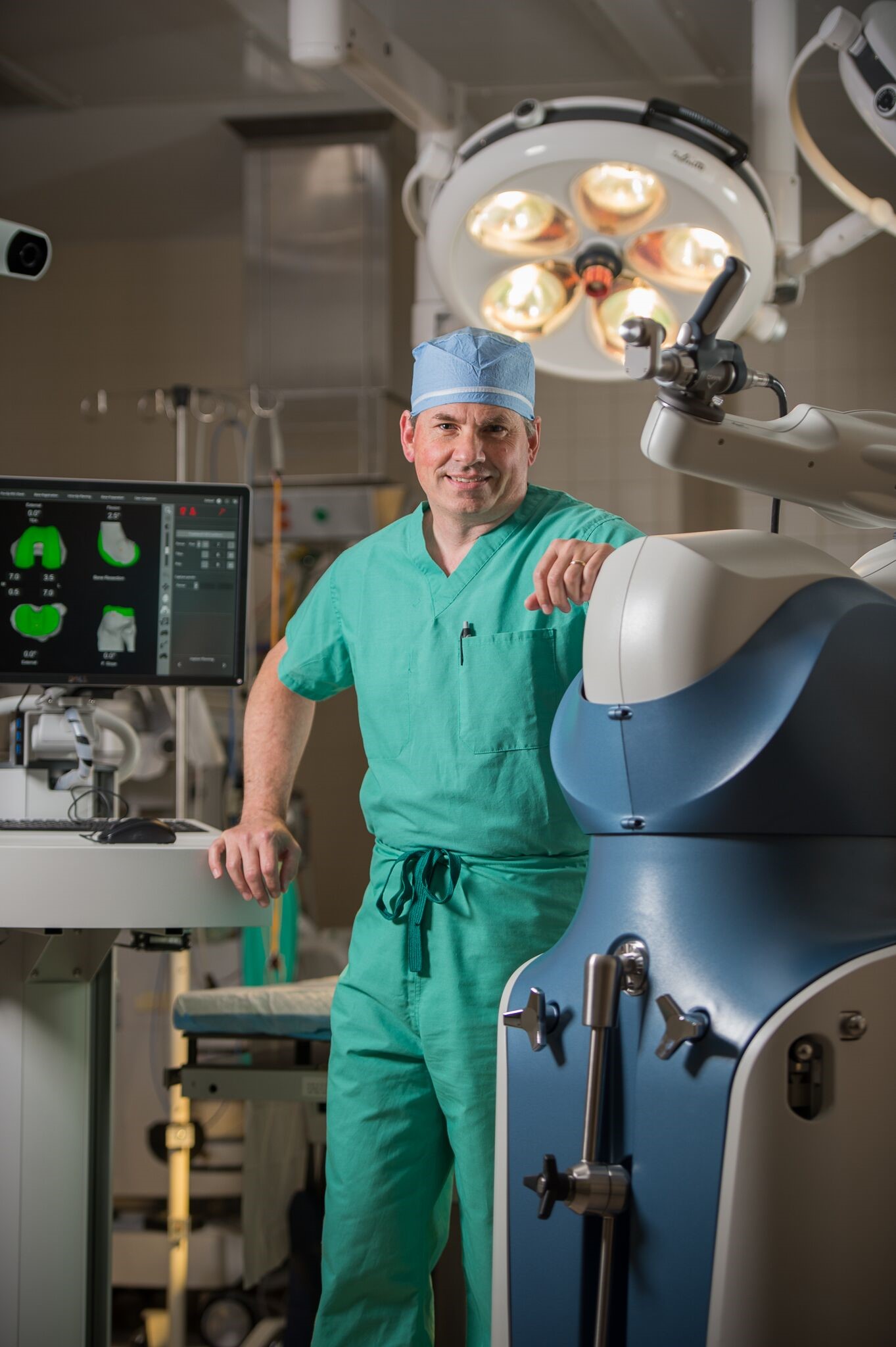How do you know when it’s time for a joint replacement? Standard operating procedure, when it comes to joint care, is to treat conservatively, in the beginning. Many times, anti-inflammatory medications and steroid injections work well for joints that are wearing out. Sometimes, however, more is required.
Beginning in 2017, Wendy Finley had done it all. Gel injections. Knee braces. Exercise programs. Weightloss. “All helped but the underlying problem was still there,” Wendy says. “Dr. Hardy told me I would know when it was time and we could continue the injections as long as I wanted to. The injections used to last three to four months, but I was lucky to get three weeks out of them at the end.”

Dr. Gordon Hardy’s advice to Wendy is one echoed throughout the orthopaedic community: when it’s time for a joint replacement, it’s not the surgeon telling the patient, it’s the patient telling the surgeon. There were two primary factors that contributed to her decision--referred pain and quality of life.
Referred pain is pain felt in the body in a location other than its actual source. Wendy’s knee was the source of her pain, but eventually, her hip and lower back began to cause her tremendous amounts of pain, as well. The referred pain, however, was not the deciding factor. “The thing that made me make the decision was vacation when I could not walk on the beach without it giving out on me. I love the beach."
As with any medical procedure, Wendy was nervous, but trust in her orthopaedic surgeon and his nurse allowed her to move forward with her decision in complete confidence. “Chrissy and Dr. Hardy assured me I would do fine. We opted to do the robotic assisted procedure at The Surgery Center. I cannot say enough about how happy I am with that decision. My incision is small and I have minimal scarring.” Mako technology begins with a CT scan of the knee that is used to generate a 3D virtual model of the patient’s unique anatomy. This virtual model is loaded into the Mako System software and is used to create a preoperative plan that helps protect the soft tissue and ligaments around the knee, as the surgeon is able to use this technology to attain the most accurate placement of implants.
What about the actual pain level? Wendy says it was nothing like she expected. “I, of course, had worked it up in my mind to be awful and expected a lot of pain. To say I was so surprised that was not the case is an understatement. I followed Dr. Hardy's instructions regarding my post-surgery exercises and medications but found I actually had minimal pain and did not require the pain medication very often. It was nothing compared to the pain I had before the procedure.”

It's only been 6-weeks since her knee replacement surgery. She is back at work and says she could not be more pleased with the results. “I am not back to 100%, but at only 6 weeks out I am thrilled with how my knee is doing.”
If you would like to discuss the benefits of joint replacement with one of our highly-skilled orthopaedic surgeons, we would love to arrange a time for you to come in. Call us at 256-236-4121.
Anniston Orthopaedic Associates, P.A., is conveniently located in the Tyler Center on the campus of Northeast Alabama Regional Medical Center. Our office is on the third floorwith easy access to the parking deck attached to the north side of the building.
731 Leighton Avenue, Suite 300
Anniston, Alabama 36207
Phone: 256-236-4121
Fax: 256-237-5254